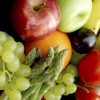Esta publicación proporciona información sobre azúcares y otros edulcorantes en la dieta estadounidense. La publicación describe fuentes ocultas de azúcares agregados en los alimentos para ayudar a aquellos que desean reducir la ingesta de azúcar, a encontrar los azúcares agregados en sus dietas. La sección sobre edulcorantes de alta intensidad analiza las características de cada edulcorante aprobado.
This is the Spanish translation of FSHN20-46/FS406, Nutrition for Health and Fitness: Sugar and Other Sweeteners. Written by Wendy Dahl and Linda Bobroff, translated by Daniela Rivero-Mendoza, and published by the UF/IFAS Food Science and Human Nutrition Department.
https://edis.ifas.ufl.edu/fs407
Tag: Sugar and Sweeteners
Nutrition for Health and Fitness: Sugar and Other Sweeteners
This new 8-page publication of the UF/IFAS Food Science and Human Nutrition Department provides information about sugars and other sweeteners in the American diet. It describes hidden sources of added sugars in foods to help those who want to reduce sugar intake find the added sugars in their diets. The section on high-intensity sweeteners looks at the characteristics of each approved sweetener, including aspartame, sucralose, and stevia. Written by Linda Bobroff.
https://edis.ifas.ufl.edu/fs406
Facts about Fructose
 Fructose is a simple sugar found in many foods. Common table sugar is made of equal amounts fructose and glucose. Similarly, high-fructose corn syrup, commonly used to sweeten foods, contains a mixture of fructose and glucose. Fructose is sweeter than glucose, and for this reason it has been used in many sweetened foods. This 2-page fact sheet was written by Wendy Dahl, Lauren Foster, and Russel Owen, and published by the UF Department of Food Science and Human Nutrition, June 2013.
Fructose is a simple sugar found in many foods. Common table sugar is made of equal amounts fructose and glucose. Similarly, high-fructose corn syrup, commonly used to sweeten foods, contains a mixture of fructose and glucose. Fructose is sweeter than glucose, and for this reason it has been used in many sweetened foods. This 2-page fact sheet was written by Wendy Dahl, Lauren Foster, and Russel Owen, and published by the UF Department of Food Science and Human Nutrition, June 2013.
http://edis.ifas.ufl.edu/fs148
FSHN10-1/FS148 Facts about Fructose
FSHN10-1, a 2-page illustrated fact sheet by Wendy Dahl, Lauren Foster, and Russel Owen, answers questions about fructose and high fructose corn syrup. Includes references. Published by the UF Department of Food Science and Human Nutrition, May 2010.
http://edis.ifas.ufl.edu/fs148
FCS8903/FY1155 Facts about HFCS—High Fructose Corn Syrup
FCS8903, a 2-page illustrated fact sheet by Leila M. Kalley and Karla P. Shelnutt, addresses some common consumer concerns and provides the most updated information on this sweetener. Published by the UF Department of Family Youth and Community Sciences, May 2010.
http://edis.ifas.ufl.edu/fy1155
